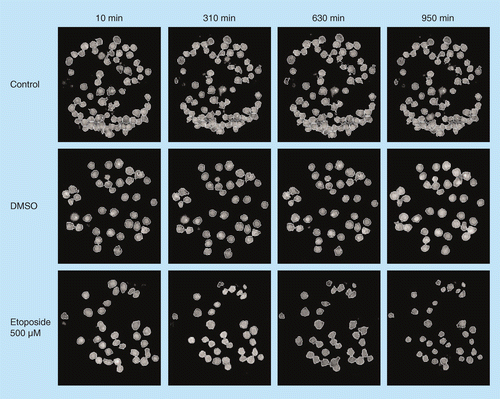Advancing Drug Discovery & Development with Quantitative Live Cell Imaging
Drug discovery and development is a lengthy and expensive process, and cell-based drug screenings play an important role in basic research. HoloMonitor is designed for automated and detailed analysis of drug-dose responses in adherent cells. It uses non-invasive quantitative phase imaging (QPI) to identify cells which enables direct measurement of drug dose-response curves over time. In this way, you get accurate and reliable data without disturbing your cells.

A label-free live cell analysis tool
Find out more how the HoloMonitor live cell imaging system is used in in vitro drug discovery & development!

Visualize the cell change in targeted drug delivery
In order to simultaneously target bulk cancer cells to prevent cancer growth and metastases, researchers are developing different target drug delivery systems to improve the biodistribution and solubility properties of nano-carries in drug deliveries.
In this study, the authors have used monoclonal antibody-modified immunoliposomes for the targeted delivery of paclitaxel and salinomycin for cancer therapy. By using HoloMonitor, the authors measured the cell morphology, proliferation and cell division changes between treatments. The results confirmed the efficiency of the antibody-targeted liposomal preparation in the therapy of cancer by giving significantly better cellular division arrest profiles and cell death.
On-demand webinar
The secrets to truly controlled cell experiments for in vitro drug development
Discover HoloMonitor Live Cell Assays
Learn more about what you can do with HoloMonitor
Realiable drug-response results with quantitative live cell imaging
The time-lapse videos show L929 cells untreated and drug-treated with 10 µM etoposide.
The time-lapse video shows the Cama-1 breast cancer cell line, which was treated with a cytotoxic compound.
Browsing publications in drug discovery
Get inspired by other research fellows, and learn how HoloMonitor quantitative live cell imaging can benefit your drug discovery and development:

Whole-Cell Multiparameter Assay for Ricin and Abrin Activity-Based Digital Holographic Microscopy
Journal: Toxins (2019)
Research Areas: Cytotoxicity
Cell Lines: HeLa, Vero

Mannich Curcuminoids as Potent Anticancer Agents
Journal: Archiv der Pharmazie (2017)
Research Areas: Drug research
Cell Lines: A549 and H1975

Enhanced Cytotoxicity of Folic Acid-targeted Liposomes Co-loaded With C6 Ceramide and Doxorubicin: in Vitro Evaluation on HeLa, A2780-ADR and H69-AR Cells
Journal: Molecular pharmaceutics (2015)
Research Areas: Cancer research, Drug research
Cell Lines: HeLa

Targeted Tumor Therapy by Rubia Tinctorum L.: Analytical Characterization of Hydroxyanthraquinones and Investigation of Their Selective Cytotoxic, Adhesion and Migration Modulator Effects on Melanoma Cell Lines
Journal: Cancer cell international (2015)
Research Areas: Cancer research, Drug research
Cell Lines: A2058, HT168-M1, MRC-5

Poloxamer Bioadhesive Hydrogel for Buccal Drug Delivery: Cytotoxicity and Trans-epithelial Permeability Evaluations Using Tr146 Human Buccal Epithelial Cell Line
Journal: International journal of pharmaceutics (2015)
Research Areas: Drug research
Cell Lines: Tr146

Interfacing Antibody-based Microarrays and Digital Holography Enables Label-free Detection for Loss of Cell Volume
Journal: Future science oa (2015)
Research Areas: Cancer research, Drug research
Cell Lines: Jurkat, U2932

With the HoloMonitor M4 we are able to easily distinguish different cell types by their unique size, shape, and movement patterns. We can’t wait to see what new biology we will discover with this innovative approach!
Alexander Payumo
San Jose State University


